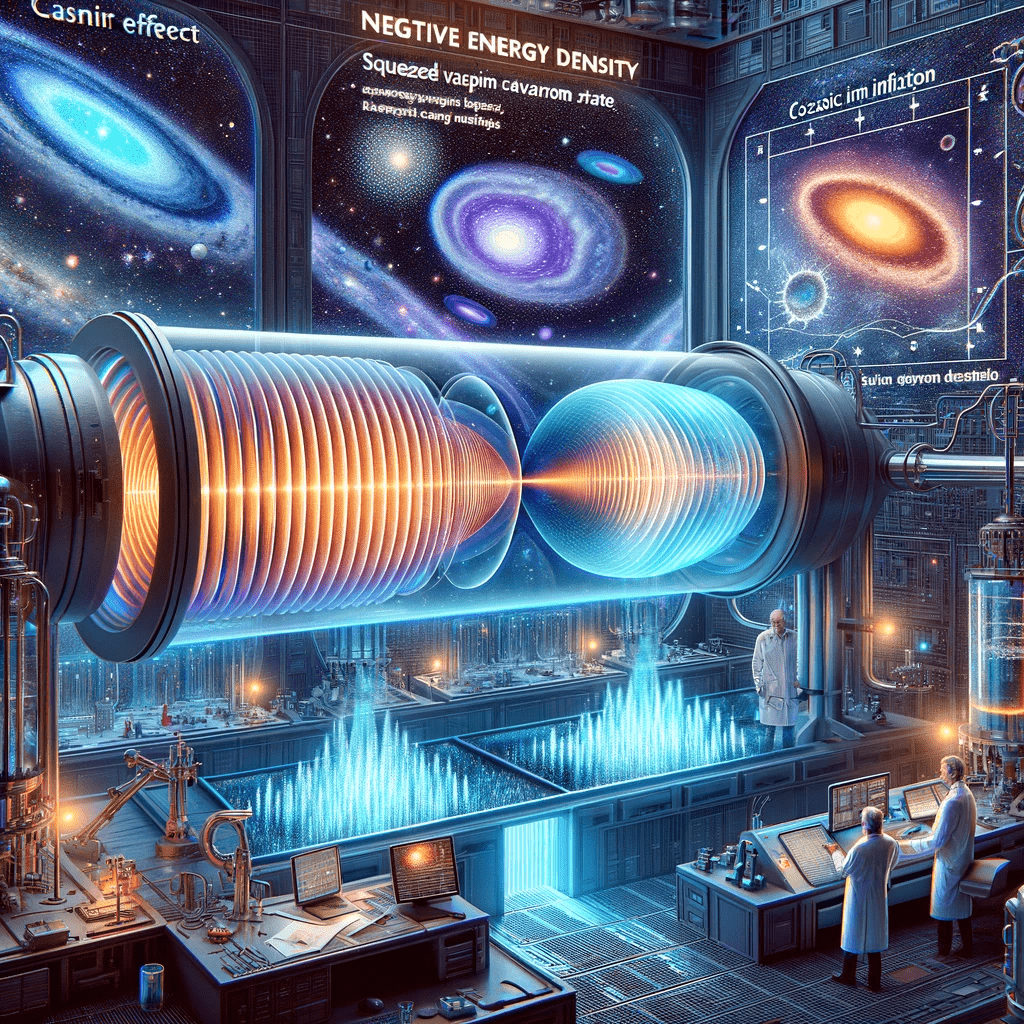Negative Energy Density

Negative energy density, although a highly speculative concept, has been a subject of interest among physicists and researchers for several years. The idea revolves around creating a region with significant negative energy density, also known as exotic matter, which has not yet been supported by experimental evidence. Nonetheless, exploring this notion helps expand our understanding of the universe and could possibly lead to groundbreaking discoveries in the future. The concept of negative energy density and the various theoretical frameworks that scientists could investigate.
Casimir Effect: The Casimir effect is a quantum phenomenon that occurs between two parallel, uncharged conducting plates in a vacuum. Due to the restrictions placed on the allowed wavelengths of virtual particles between the plates, there is a difference in the energy density inside and outside the plates. This creates a negative energy density between the plates and an attractive force between them. However, the Casimir effect produces a relatively small negative energy density, and it’s uncertain whether this effect could be scaled up for practical applications.
In a 1997 study, Steven K. Lamoreaux experimentally confirmed the Casimir effect with a high degree of accuracy (source: Lamoreaux, S. K. (1997). Demonstration of the Casimir Force in the 0.6 to 6 μm Range. Physical Review Letters, 78(1), 5-8).
Squeezed Vacuum States: In quantum field theory, squeezed vacuum states involve manipulating the vacuum state’s fluctuations in such a way that certain modes have a reduced uncertainty, while others have increased uncertainty. This can, in principle, result in regions of negative energy density. However, generating and maintaining a squeezed vacuum state with a significant negative energy density over a macroscopic scale remains highly speculative.
Squeezed vacuum states have been experimentally observed in the context of quantum optics, but their applicability to producing negative energy density remains unclear (source: Slusher, R. E., Hollberg, L. W., Yurke, B., Mertz, J. C., & Valley, J. F. (1985). Observation of squeezed states generated by four-wave mixing in an optical cavity. Physical Review Letters, 55(22), 2409-2412).
Negative Energy Density from Cosmic Inflation: During the early universe’s inflationary period, it is theorized that the vacuum energy density could have been negative. If scientists could somehow replicate the conditions of cosmic inflation in a controlled environment, they might create regions of negative energy density.
Cosmic inflation, a theory developed by Alan Guth in the 1980s, postulates that the universe underwent a rapid expansion in its earliest moments, which could have involved negative energy density (source: Guth, A. H. (1981). Inflationary universe: A possible solution to the horizon and flatness problems. Physical Review D, 23(2), 347-356).
Theoretical physicist and cosmologist Lawrence M. Krauss, have written extensively about negative energy density in their works. In his book “The Physics of Star Trek,” Krauss discusses the concept of negative energy density and its implications for advanced technologies like warp drives.
The Guardian, have reported on research related to negative energy density, such as a 2015 article discussing a study by Dr. Sonny White and his team at NASA’s Eagleworks Laboratories. The article highlights the team’s investigation into the possibility of using negative energy density to create a warp bubble, a concept inspired by Star Trek’s faster-than-light travel.
Theoretical frameworks, such as the Casimir effect, squeezed vacuum states, and negative energy density from cosmic inflation, offer intriguing avenues for investigation, but the practical implementation of these ideas faces significant challenges, such as stability, scalability, and control.

